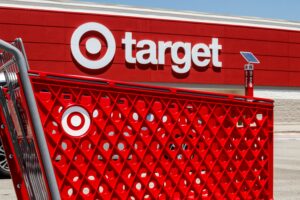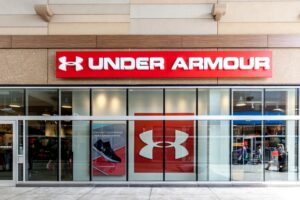
Photo: @lelia_milaya via Twenty20
May 5, 2022
Are Americans getting ready to hit the brakes on spending?
American consumers, for the most part, have continued spending along established patterns despite encountering higher prices for the staples of everyday life driven up by inflation. That, however, may be in the process of changing — research from a variety of sources shows that many people are having to adjust their spending to stretch their disposable dollars.
A new survey from American Consumer Credit Counseling of households earning $100,000 a year or less finds that 93 percent have personally felt the effect of higher prices on everyday items. More than 30 percent have made changes to reduce what they spend on fuel. Nineteen percent have cut back grocery purchases. More than half of canceled or modified travel plans for the summer.
“This surge in costs across just about every category of consumer goods is a significant burden on American households,” Allen Amadin, president and CEO of American Consumer Credit Counseling, said in a statement. “Discretionary spending is generally the first thing to be curbed during times of financial crisis. When people are forced to buy fewer groceries or change their commuting habits, we have entered an entirely new level of challenge.”
New research from LendingClub Corporation and PYMNTS finds that 64 percent of Americans are currently living paycheck to paycheck. This could lead consumers to take on greater debt, which would further restrict their ability to spend down the road.
“The number of people living paycheck to paycheck today is reminiscent of the early days of the pandemic and it has become the dominant lifestyle across income brackets,” said Anuj Nayar, financial health officer at LendingClub. “As inflation we have not seen in a generation takes more of our paychecks for everyday needs, Americans across incomes and credit scores are increasingly relying on credit products just to get by.”
Malt-O-Meal, the value-priced bagged cereal brand, also released research that shows price is becoming critical to purchasing decisions. Seventy-one percent of respondents said they are more likely now to shop on a budget than prior to the pandemic. Households with children are 21 percent more likely to do so than those where no kids are present.
Fifty-three percent of those surveyed are buying value brands to stretch their grocery purchases. Forty-five percent are shopping using a sales flyer and 43 percent are making use of a store’s rewards app.
- American consumers curbed spending on both necessities and discretionary activity as inflation surged in first quarter – American Consumer Credit Counseling
- 2/3 of the U.S. Population Now Lives Paycheck to Paycheck – LendingClub Corporation/PRNewswire
- As Grocery Prices Surge, New Malt-O-Meal Survey Finds Nearly 3 in 4 Consumers Likely to Purchase Foods from Value Brands as They Prioritize Quality and Affordability – Malt-O-Meal/PRNewswire
Discussion Questions
DISCUSSION QUESTIONS: Do you think the point has been reached when a large percentage of Americans are going to significantly change how they shop to save money? How will this affect retailers that sell products that fall under the discretionary spending category?
Poll
BrainTrust
Recent Discussions







Not only is inflation impacting consumer spending now, there doesn’t appear to be an end in sight. The one-half percent interest rate hike announced by the Fed will most certainly curtail big ticket purchases. Consumers are already having to make trade-offs because of the high price of every day goods, and I expect to see these headwinds continue. Retailers selling discretionary goods will need to be even more creative to encourage shoppers to spend.
Americans cannot spend in the same way they have been doing for the past couple of years. Why? Because those two years were exceptional: normal consumption habits were disrupted and trillions in stimulus was injected into the consumer economy. On top of this, the economic backdrop has changed and it is costing the average American way more to doing everyday things like travel or stock up on food. There are already early signals things are shifting: retail volumes are falling, online spending at big retailers is down, subscription services are being cancelled, channel switching and product substitution is happening in sectors like grocery and apparel. Whether or not these things accelerate depends on the economic reality over the next year. However the current trajectory suggests further change is coming and, for many retailers, that change will bring more pressure.
Discretionary spending has already started to slow – the broader tracking hasn’t picked up the change yet, especially at the durable goods level. As consumers adjust their expectations and curtail spending habits we will see continued reductions over time.
With continued inflation, high gas prices, and the threat of a recession hitting (April’s inverted bond yield curve), consumers are reacting with their wallets. It should be no surprise that consumers are more frequently trading down to house brands and watching every penny they spend. I think you’ll see an uptick in coupon redemption and loyalty programs. dollar, thrift and DIY retailers will thrive, while upscale stores could face a tougher time matching last year’s sales numbers.
We’re still en route to the point where many Americans will radically change their habits to save money.
As groceries, gas and housing costs climb, more consumers will show price sensitivity. They will buy less or switch to more value brands and private labels. They may also join memberships to save money on gas, groceries and delivery.
Retailers in discretionary spending categories can tie product quality to investing in consumers’ timeless emotional needs.
For instance, retailers could reflect consumer needs and desires like:
The years of the Great Depression ingrained the shopping habits of the Depression Generation. While the pandemic was only a two-year phenomenon it changed habits for many, despite the government’s attempt at stimulus. The patterns included finding lower-priced items that were as satisfying as what they used to buy, finding things they were used to buying that they really didn’t need, and the experience of actually being short of funds to pay for basics.
It’s likely we will see more impact from inflation. Yet American consumers don’t often seem to change shopping habits to save money. My expectation is that there will be more competition for the money consumers are already spending – that $100 they’re spending today will simply buy less.
Governments and economies across the world are at a really difficult point right now. Very high inflation is driving prices which will undoubtedly slow spending and could cause the economy to shrink, potentially leading to a recession. This is the last thing that any government wants but they also have to manage inflation and the tools they use to do that are interest rates, which further drive up prices and reduce disposable income.
Retailers with strong value brands and own labels at a good price will do well as shoppers try to reduce their spend. While grocers will maintain sales, anyone in discretionary spend sectors will find it very tough. This is not the first time the world has faced these sorts of problems and no doubt it will not be the last. Retailers need to make sure they are as efficient as possible to ride out this period and be in a good place to prosper when good times return.
They are already hitting the brakes. Sprouts reported its Q1 results yesterday, and the company’s CFO, Chip Molloy, warned that inflation was not slowing and customers are putting “one to two fewer items in their basket than last year.” He added that consumers spend more limited discretionary funds on experiential offerings and travel and restaurants. Grocers like Sprouts that choose to pass through the cost inflation to consumers entirely are more likely to suffer slowing unit sales compared to Albertsons, which has had a partial inflation pass through to their customers.
If it hasn’t been reached, we are damn close. A lot depends on variables that are hard to model – new COVID-19 variants, the situation in Ukraine, the length and depth of inflation and recession, Fed monetary policy, etc. – but some constraint on consumer spending and/or consumer trading down seems almost inevitable at this point. Obviously this impacts lower and middle income shoppers more than the rich so luxury goods, for example, should be more stable than canned goods.
There are economic times in which people just want to feel good. This can mean purchases of cut-price items that bring them some joy. A new toy for the child and reduced-price, fun items from the racks of stores. Merchandising sensitivity is required in harder times. Be very sensitive to the customer needs and you will build friends of the store.
While prices are rising, big-ticket items remain out of reach for a lot of Americans, so look for them to make small splurges instead.
Note to merchandisers: merchandising is tantamount to success in slower economic times. Compelling presentations, shaved pricing and upped service. In comparison to competition you must shine, and win.
In the grocery sector, inflation has forced shoppers to spend down by switching from higher-priced name brands to lower-priced store brands Shopper negative reaction to “shrinkflation” in name brand packages has also played a role. I expect this trend will continue the rest of the year because inflation will continue, hitting shoppers in their pocketbooks.
Price sensitivity is clearly apparent and there is no end in sight. Get ready to see more grocery shoppers looking at their phone while walking down the aisle or checking off that list prepared in advance. Shift to private label goods will make the chains happy with better margins on goods sold. The intersection of inflation, supply challenges, disposable income tightening and interest rate hikes plus trying to comp surge in demand/sales in certain categories/sectors during/post-pandemic is a highly challenging combination of factors. It is creating significant pressure especially in retail to meet/beat YoY performance – many are missing the mark. Thus we are seeing increased attention to CRM, loyalty, personalization, offer optimization and advanced analytics.
Yes, we are in the middle of a phase of spending reconsideration for consumers. Households are considering cutting the extras and things that were commonplace in 2020 and 2021.
The ultra-convenient delivery services have started raising prices. Consumers may be thinking, do I really need to order food or a coffee with a $3-5 additional fee several times a week?
Streaming services were all the rage in 2020/2021. It’s time to rationalize. How many do consumers really need?
As consumers’ mindset moves to price and value, it is important for retailers to understand what their customers are thinking. This is a time when the value retailers and private brands take share. Retailers messaging may need to reassure them that there are options for them at multiple price points.
Not yet. There will be some segments of the population holding back because of their inability to pay, but we have a tight labor market and even some bounce in wages. It’s more likely that folks will be a bit more parsimonious with their cash, but not enough to upset the apple cart.
There is still a pent up demand to go outdoor dining, entertaining. Many travel options are opening up and retailers will see the middle-upper classes dipping into the retail markets. The largest sector adversely impacted will be the lower end of the market, which will translate into enormous value and market share capture by discounters and off-price retailers.
No, no, no, no … Americans are not going to hit the brakes on spending. Maybe by the end of the summer after 2 more interest rate increases. Maybe by the end of fall after 3 more interest rate increases. But we are clearly pushing through a period of “stagflation” like the ’70s, and with so many people choosing not to work, we still have to address ridiculously low employment to go with this.
Staffing shortages are everywhere, and labor rates are still well-behind where they need to be to attract workers to come back to work. Until this is corrected, Americans clearly are not worried so much about having enough money, or getting another job. This makes inflation, with so many people out of work (by their own choice) a distant second. Employment and labor rates continue to distort the scales first, not inflation. We need to ask the 20+% of people who left their jobs, or who are planning on leaving their jobs what their primary concern is … and it won’t be inflation!
This period reminds me of 2008, when food retail (grocery) shoppers went through similar decisions to tighten spending habits.
In the grocery world, even at the higher quality level, we saw our upper income customers do three things:
Those who lived lavishly in restaurants began to buy more high grade steaks and fresh seafood in the store. Those who used to buy higher grade meats and seafood soon traded down to lesser cuts, looking for more deals. Those who only occasionally enjoyed meat and seafood because of price become more coupon and price sensitive. All in all, cooking at home and deal searching increased.
Everyone in food retail right now has an opportunity to earn long-term customer loyalty by helping customers shop for better value, making deals and discounts more obvious. Now is the time to show them how to meal plan, cook, save time and money.
This is not exclusively a North American issue. This will impact consumers across the globe. Families will be looking at expenditure and working out where they can cut back. Expectations around the rate of inflation in some industrialised economies suggest that it will be higher than at any time than in the last 40 years.
Not only is this a new experience for consumers but for businesses as well.
Anecdotal evidence suggests that consumer behaviour changes have already started — Netflix subscriptions being one data point but there are also cases of consumers buying larger sizes of pack to save money.
The pent up demand from COVID is what has been driving the spending as people “live like it is 2019.” With inflation and increase in interest rates, it will reduce spending on discretionary items and big ticket items that are usually financed. Retailers that sell into discretionary spending need to adjust their offering from a price and financing point of view. It could be tough when combined with the supply chain issues.
Various market dynamics are causing inflation to rise. However, rising inflation does not appear to be having much of an impact on Americans’ spending patterns. This, like any other event or crisis, would provide an opportunity for companies to engage with their customers.